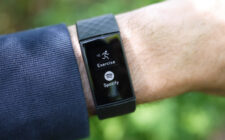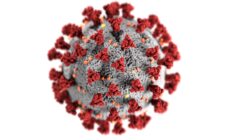What is stroke
STROKE is as same as the heart attack except its occurrence in the brain.
Any obstruction in the blood flow to the brain reduces oxygen supply, leading to brain cells death. Dead brain cells will never recover. This death of brain cells is said to be stroke.
Brain is the governing centre of every parts of the body. Every single function of the body is under control of brain. According to the area of brain where the stroke has occurred, the function of body is impaired.
Stroke is also known as CEREBRO VASCULAR ACCIDENT..
What are the Causes and types of stroke:
According to different causative factors leading to stroke there are few types of strokes classified or named.
ISCHAEMIC stroke: this is the most common stroke prevailing in about 85% of cases. This type of stroke is caused by reduced supply of blood to brain due to blockages in the blood vessels supplying the brain. In reply brain doesn`t get sufficient oxygen to function properly.
HAEMORRHAGIC stroke: this type of stroke accounts for about 15% of the cases. As the name indicate it reduces the blood and oxygen supply to brain by bleeding process,
EMBOLIC stroke: These strokes occur by the movement of emboli or clotting of blood formed somewhere in the body towards into the brain affecting the blood supply to the brain.
THROMBOTIC stroke: this type is caused by the thrombus formation i.e. the fat deposition in the walls of the arteries supplying the brain. Thrombus formation blocks the blood to brain and reduce the oxygen supply to brain.
The emboli stroke and thrombotic stroke can be grouped under ISCHAEMIC stroke. The further types of the HAEMORRHAGIC stroke are subarachnoid and intra cerebral stroke.
The subarachnoid stroke is the stroke occurring due to bleeding under the membrane covering the brain.
The intra cerebral stroke is the stroke occurring due to the bleeding within the brain.
What are the risk factors for stroke :
- Ageing factor – as the age increases the risk of stroke also increases. Especially after age of 55 the chance increases rapidly.
- Gender – usually men are at more risk than women
- Genetic transmission – some have risk factors for stroke running in their families and the occurrence rate is higher.
- Racial – mostly the African American are affected.
- Smoking and alcohol addiction
- High blood pressure – increase in blood pressure will reduce the heart pumping action and reduce the blood flow to brain.
- Diabetes – increase in blood sugar level will increase the blood pressure and damage the heart functions and leading to reduce the blood supply to brain.
- Obesity – body mass index over 30
- Lack of physical activity
- High blood cholesterol – increase in cholesterol level above 200mg/dl will increase the risk of stroke.
- Use of birth control pills in females.
Symptoms of stroke :
The stroke symptoms can be found by the swift in the normal body functions. Some immediately seen symptom or the first time seen symptoms are:
- Weak arms or legs (mainly on one side of the body)
- Inability in eye vision power
- Headache of unfamiliar cause
- Disturbances in swallowing
- Vague feeling in breathing and heart beat
- Disturbances in bladder and bowel control
These are the signs seen at the very first time stroke as started damaging the functions of body. This is the stage where the stroke can be easily treated. So consider these symptoms as the emergency sign to take treatment for stroke.
Some symptoms involving the cerebral cortex:
- Change in the voluntary movements
- Change in the vision capability(badly affected) due to vision area involvement
- Disturbed thinking pattern
- ANOSOGNOSIA (inability to recognize the deficit in our body)
- Change in the speech pattern and the ability to express, read and write
Some symptoms involving the cerebellum:
- Disturbance in maintaining the balanced postures.
- Difficulty in walking gait management.
- Total loss of coordination function
- Difficulty n skillful movements
What are the tests for stroke diagnosis :
The neurology specialist will first test the normal functions or abilities of the body. They
- Check the consciousness or perceptional functions are normal
- Check the disturbances in speech and expressions
- Check for eye sight problems
- check gait movements are normal
- Check for the balance and coordination abilities
- Check for the reflex activities
Computerized tomography scans (CT SCAN):
CT SCAN is useful in testing and revealing the bleeding in the brain. The CT scan easily diagnoses the hemorrhagic stroke. It takes time to diagnose the ischemic stroke.
Magnetic resonance imaging: (MRI):
MRI shows the high quality brain images than the CT scan. MRI clearly reveals the narrowing or blockages in the carotid artery supplying brain. MRI is preferred over CT scan because of its quickness and effectiveness.
Lumbar puncture:
Cerebrospinal fluid is taken from the lower part (lumbar) of the spinal column for diagnosis, if there is a strong doubt for hemorrhagic stroke.
Trans cranial Doppler:
This test involves the sound waves to diagnose the stroke by measuring the blood flow through the blood vessels.
Carotid duplex is another type of test to measure blood flow using the sound waves.
Cerebral angiography:
This test is done by injecting a dye (visible trough x-rays) into the carotid artery. Slight or no dye will be seen in the areas of partial or total blockages.
Electrocardiogram (ECG):
ECG is done to check for the rhythmic conduction of heart beat. Few arrhythmias are likely to cause blood clot in the arteries of brain.
Echocardiogram:
This test checks for sound waves for detecting heart functions and monitor any movement of emboli from leg towards the brain via heart.
Few other blood test and leg ultra sound are done to diagnose the other risk factor conditions leading to stroke.
Treatment plans :
Depending on the stroke types the treatment procedures differ.
In the ischemic stroke medications like tissue PLASMINOGEN activator and anti platelet drugs such as ASPIRIN, CLOPIDOGREL and DIPYRIDAMOLE is administered.
In case of hemorrhagic stroke the pressure inside the bran should be totally reduced. The blood pressure, swellings in brain, blood sugar levels should be reduced by use of medicines.
Quicker the diagnosis and treatment quicker will be the recovery process. Severe cases suffer a lot and recovery stays in slow phase.
Only in the emergency or severe conditions following surgeries are undergone:
- Carotid ENDARTERECTOMY – this procedure is done to clear the plague formation in the carotid artery by opening of the artery.
- ANGIOPLASTY – this procedure uses the ballooning technique to compress the plague against the walls of the vessels.
- STENTING – this technique involves the use of stent (metal mesh tube) to clear the narrowing of the carotid artery. It also prevents recurrent narrowing.
- ANEURYSM clipping – clipping done to isolate aneurysm from circulating artery and stop the bleeding process
- Coiling – another method alternative to clipping by use of coil sealing the aneurysm from the circulatory artery.
Rehabilitation for stroke patients :
Rehabilitation is the process of team work effort to bring back or recover the patient to lead a normal life.
Rehabilitation helps to live life in an easier manner.
For the stroke survived patients there is a strong need for a complex rehabilitation process. Recovery is inimitable, so care should be advised in rehabbing different type of stroke patients.
Some rehabilitation programs involved are inpatient program, nursing care, outpatient program and home based programs.
The rehabilitation team involves
- Physiatrists, neurologists and other physicians
- Individually specialized nursery care – careful attendance of nurse will benefit the patient from quick recovery.
- Physiotherapy – this therapy aims on the physical activity development of the patient.
- Occupational therapy – this therapy makes modulation in the occupational situation of the patient and makes him more comfortable.
- Speech therapy – relieving the difficulties in speech and expressions.
- Dietician – maintain the needed diet for the patient to recover quickly.
- Social worker – to make the stroke patient to be socially movable after the treatment process.
- Psychologists – motivate the patient `s mind to cope with the recovery process.
- Most of all the family and friends – these members has to be associated and affectionate to the patient and make him more confident.
The rehabilitation is successful only if the team work is coordinated and be skillful. The family and friends are needed to be more involved in rehabilitation. It also depends on the condition of the stroke affected patient.
Avoidance of next stroke:
First year after original stroke is the time for consecutive stroke occurrence. Careful monitoring of patient is required. Family members need to make adjustments according to the patient condition.
Few factors to be followed are
- Keep the blood pressure and blood sugar level under control
- Monitor closely for the heart diseases
- Regular drug administration
- Regular exercise, especially morning walk
- Reduce the intake of fatty foods, keep regular diet plan with high fiber content
- Avoid stressful situations
The only risk factor that cannot be changed is the aging process. In old age people consecutive stroke prevention is minimal.
Conclusion :
Stroke is the last stage of the brain cells death. Dead brain cells will never be regenerated. This leads to death of the victim. Earlier detection makes stroke management earlier and beneficial. The stroke can be efficiently managed to make the life comfortable. Knowledge on the stroke is important for patient to be aware of the frequent stroke attack.
With today’s advanced technology, providing Proper rehabilitation and health care can control stroke and its risk factors to the large extent possible.





